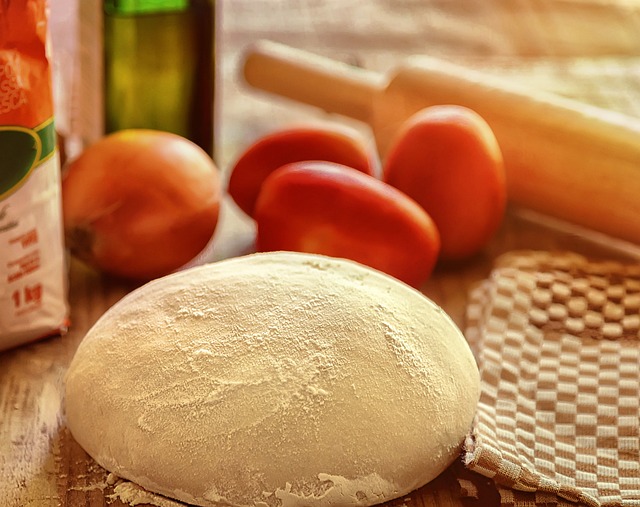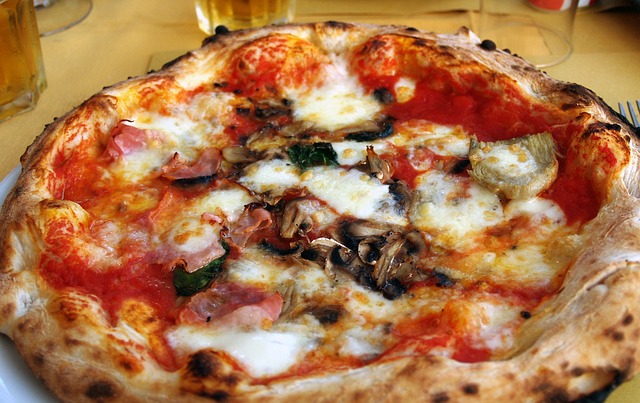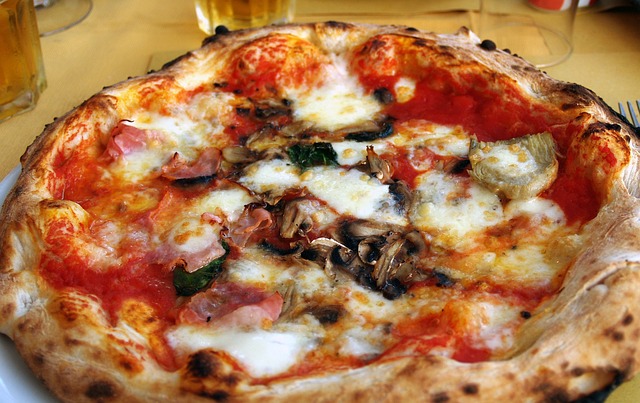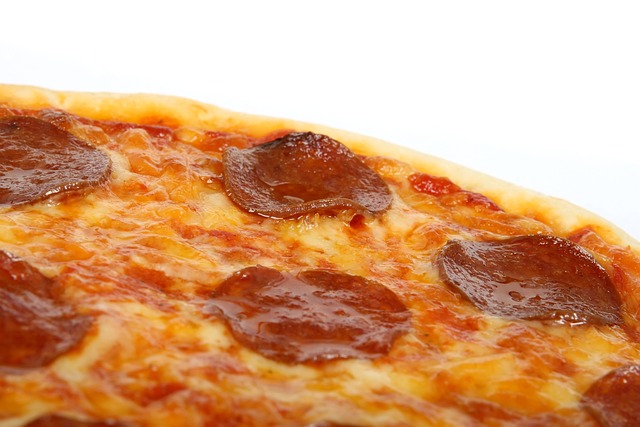If you are a pizza lover and enjoy exploring different styles of pizza, then Roman Pizza is a must-try for you. Known for its thin and crispy crust, authentic Roman Pizza offers a unique and delicious experience that sets it apart from other styles of pizza. Whether you prefer traditional Roman Pizza with classic toppings or want to try something new and innovative, there is a wide array of options to choose from. In this blog, we will explore the best Roman Pizza restaurants, the most delicious recipes, and even how to make your own Roman Pizza at home. Get ready to tantalize your taste buds with the irresistible flavors of this iconic Italian dish.
Main Points
- Authentic Roman Pizza offers a unique and delicious experience with its thin and crispy crust.
- There is a wide array of options for traditional Roman Pizza toppings.
- We will explore the best Roman Pizza restaurants.
- We will also provide delicious Roman Pizza recipes and tips for making it at home.
The History of Roman Pizza
Roman pizza has a long and fascinating history that dates back to ancient times. The origins of this dish can be traced back to the ancient Roman civilization, where flatbreads were a staple food. Over the centuries, Roman pizza has evolved and transformed into the delicious and iconic dish it is today.
Authentic Roman Pizza
When it comes to authentic Roman pizza, there are a few key characteristics that set it apart from other styles of pizza:
- Thin crust: Roman pizza is known for its thin and crispy crust, which is often cooked in a wood-fired oven.
- Simple toppings: Unlike its American counterpart, Roman pizza typically features simple yet high-quality toppings such as fresh tomatoes, mozzarella cheese, and basil.
- Long fermentation: The dough for Roman pizza is typically fermented for an extended period, resulting in a light and airy crust with a depth of flavor.
Best Roman Pizza
There are countless pizzerias in Rome that claim to serve the best Roman pizza, but a few notable establishments stand out:
- Pizzarium: This renowned pizzeria is known for its innovative approach to Roman pizza, with a wide variety of creative toppings and flavor combinations.
- Da Remo: A classic Roman pizzeria that has been serving up traditional Roman pizza for decades, beloved by locals and visitors alike.
- Bonci Pizzarium: Another popular spot for Roman pizza, this pizzeria is famous for its rectangular slices and flavorful toppings.
Delicious Roman Pizza
Whether you’re enjoying a classic Margherita or a more adventurous flavor combination, one thing is for certain – Roman pizza is undeniably delicious. The perfect balance of crispy crust, flavorful toppings, and a touch of Roman culinary history make it a truly unforgettable dining experience.
The Ingredients That Make Roman Pizza Special
When it comes to traditional Roman Pizza, there are a few key ingredients that make it truly special. Whether you’re enjoying Roman Pizza delivery or trying your hand at a Roman Pizza recipe at home, these essential ingredients are what give this classic dish its unique flavor and texture.
The Dough
Roman Pizza starts with a simple dough made from flour, water, yeast, and salt. However, it’s the long fermentation process that sets Roman Pizza dough apart. This slow rise allows the dough to develop complex flavors and a light, airy texture that is characteristic of Roman Pizza.
The Sauce
Another key component of Roman Pizza is the sauce. Unlike the heavily seasoned sauces found in other pizza styles, Roman Pizza sauce is made from San Marzano tomatoes, which are known for their sweet and tangy flavor. The sauce is lightly seasoned with salt and olive oil, allowing the natural sweetness of the tomatoes to shine through.
The Toppings
When it comes to toppings, Roman Pizza keeps it simple. Classic Roman Pizza is often topped with just a few high-quality ingredients such as fresh mozzarella, basil, and a drizzle of olive oil. The emphasis is on letting the quality of the ingredients speak for themselves, rather than piling on excessive toppings.
| Dough | Sauce | Toppings |
|---|---|---|
| Flour, water, yeast, salt | San Marzano tomatoes, salt, olive oil | Fresh mozzarella, basil, olive oil |
Whether you’re enjoying a traditional Roman Pizza at a pizzeria in Rome or trying to recreate the flavors at home, these key ingredients are what make Roman Pizza truly special. From the perfectly fermented dough to the simple yet flavorful sauce and toppings, every element of Roman Pizza plays a crucial role in creating a one-of-a-kind culinary experience.
Traditional Techniques for Making Roman Pizza
When it comes to making authentic Roman pizza, traditional techniques are key. From the dough to the toppings, every step of the process has been perfected over centuries. Here, we’ll take a closer look at the traditional techniques for making Roman pizza.
Preparing the Dough
The first step in making Roman pizza is preparing the dough. Unlike Neapolitan pizza, which is known for its soft and chewy crust, Roman pizza has a thinner, crispier crust. The dough is typically made with a high-protein flour, water, yeast, and salt. It’s then left to rise for an extended period, resulting in a light and airy texture.
Stretching the Dough
Once the dough has risen, it’s time to stretch it into the characteristic thin, oval shape of Roman pizza. This is typically done by hand, using a careful stretching technique to avoid tearing the dough. The goal is to achieve a uniform thickness across the entire crust, resulting in a crispy yet tender base for the pizza.
Adding the Toppings
When it comes to toppings, Roman pizza is known for its simplicity. Classic toppings include fresh tomatoes, mozzarella cheese, fresh basil, and a drizzle of olive oil. While there is some room for creativity, it’s important to remember that less is more when it comes to Roman pizza. The focus should be on the quality of the ingredients rather than an abundance of toppings.
In conclusion, the key to making authentic Roman pizza lies in honoring the traditional techniques that have been passed down through generations. From the preparation of the dough to the simplicity of the toppings, each step plays a crucial role in creating the perfect Roman pizza.
The Influence of Roman Cuisine on Pizza Making
When it comes to the history of pizza, it is impossible to overlook the profound influence of Roman cuisine on the development of this beloved dish. The ancient Romans played a significant role in shaping the culinary traditions that eventually led to the creation of modern pizza.
The Roots of Roman Cuisine
Roman cuisine was characterized by its use of simple, yet flavorful ingredients such as olive oil, garlic, and herbs. These ingredients formed the basis of many Roman dishes, including the forerunners of the modern pizza.
The Birth of Pizza
One of the earliest examples of Roman influence on pizza can be seen in the ancient dish known as plakous. This flatbread was topped with olive oil, garlic, and cheese, strikingly similar to the pizzas we enjoy today.
The Evolution of Pizza Making
As Roman culinary traditions spread throughout the Mediterranean region, the concept of flatbread topped with various ingredients began to take on regional variations. In Italy, the addition of tomatoes, a New World ingredient brought back to Europe by explorers, transformed the dish into the pizza we know and love.
Legacy of Roman Influence
The enduring legacy of Roman cuisine can be seen in every slice of pizza enjoyed around the world. From the use of simple, fresh ingredients to the emphasis on bold flavors, the influence of ancient Roman cooking is unmistakable.
In conclusion, the roots of pizza can be traced back to the culinary traditions of ancient Rome. The use of olive oil, garlic, and cheese in Roman dishes laid the foundation for the creation of pizza, and its legacy continues to shape the way we enjoy this iconic dish today.
Exploring Different Varieties of Roman Pizza
When it comes to pizza, the Roman style offers a wide variety of delicious options that cater to different tastes and preferences. From the classic Margherita to the more adventurous Carbonara, Roman pizza has something for everyone. In this article, we will explore some of the most popular varieties of Roman pizza and what sets them apart.
1. Margherita
The Margherita pizza is a classic Roman staple, known for its simplicity and fresh flavors. Made with San Marzano tomatoes, mozzarella cheese, fresh basil, and a drizzle of olive oil, this pizza highlights the quality of its ingredients. The tomato sauce provides a perfect balance to the creamy mozzarella, while the basil adds a refreshing touch. The Margherita is a timeless favorite for those who appreciate traditional Italian flavors.
2. Marinara
For those who prefer a simpler pizza without cheese, the Marinara is the perfect choice. This pizza is topped with a tangy tomato sauce, garlic, oregano, and a hint of olive oil. Despite its minimal toppings, the Marinara is bursting with flavor and is a great option for vegetarians. The absence of cheese allows the tangy tomato sauce to take center stage, making it a refreshing and light option.
3. Carbonara
For a more indulgent and decadent option, the Carbonara pizza is a must-try. Inspired by the classic pasta dish, this pizza features a creamy white sauce, pancetta or bacon, pecorino cheese, and a sprinkle of black pepper. The richness of the sauce combined with the saltiness of the pancetta creates a flavor explosion that is sure to satisfy any craving for comfort food. The Carbonara pizza offers a unique twist on traditional Roman flavors.
Whether you prefer the simplicity of the Margherita, the tanginess of the Marinara, or the indulgence of the Carbonara, Roman pizza has something to offer every pizza lover. Each variety showcases the versatility and creativity of Italian cuisine, making it a delight for food enthusiasts around the world.
The Art of Topping Selection in Roman Pizza
When it comes to the art of topping selection in Roman pizza, there are a few key principles to keep in mind. The toppings can make or break a Roman pizza, so it’s important to choose them wisely. Here are some tips for selecting the perfect toppings for your Roman pizza:
1. Quality Over Quantity
One of the most important things to remember when choosing toppings for your Roman pizza is that quality is more important than quantity. Instead of loading up on a wide variety of toppings, focus on selecting a few high-quality ingredients that complement each other well.
2. Balance is Key
Another crucial aspect of topping selection in Roman pizza is achieving a balance of flavors and textures. Consider combining salty and savory ingredients with something sweet or tangy to create a well-rounded flavor profile. Additionally, be mindful of the textures of your toppings – mixing crispy and creamy elements can take your pizza to the next level.
3. Embrace Tradition
While there is certainly room for creativity when it comes to selecting toppings for Roman pizza, it’s also important to embrace tradition. Classic Roman pizza toppings include ingredients like fresh mozzarella, San Marzano tomatoes, and fragrant basil. Don’t be afraid to stick to tradition and let the quality of the ingredients shine through.
“The art of topping selection in Roman pizza lies in finding the perfect balance of flavors and textures while embracing the rich tradition of authentic ingredients.” – Pizza Chef Giovanni Rossi
Remember, the art of topping selection in Roman pizza is all about quality, balance, and tradition. By keeping these principles in mind, you can create a truly exceptional Roman pizza that delights the senses and satisfies the soul.
The Role of Wood-Fired Ovens in Roman Pizza
Wood-fired ovens have played a crucial role in the creation and flavor of Roman pizza for centuries. These traditional ovens are not only responsible for the unique taste and texture of the pizza, but they also hold cultural and historical significance in the Roman culinary tradition.
Here are some key aspects of the role of wood-fired ovens in Roman pizza:
1. Traditional Cooking Method
The use of wood-fired ovens in baking Roman pizza dates back to ancient times. This traditional cooking method imparts a smoky flavor and charred texture to the pizza crust, which is highly valued in Roman culinary culture.
2. Even Heat Distribution
Wood-fired ovens are known for their ability to distribute heat evenly, resulting in a crisp yet tender crust for Roman pizza. The intense heat produced by the wood fire cooks the pizza quickly, giving it the perfect combination of a crunchy exterior and a soft interior.
3. Cultural Significance
Wood-fired ovens hold a special place in the Roman culinary tradition, symbolizing the connection to the past and the preservation of authentic cooking techniques. The art of building and using these ovens has been passed down through generations, contributing to the rich cultural heritage of Roman cuisine.
In conclusion, the use of wood-fired ovens is an integral part of the authentic and time-honored process of making Roman pizza. It not only shapes the distinctive flavor and texture of the pizza but also serves as a reminder of the cultural heritage and traditions of Roman cuisine.
Roman Pizza and Its Place in the Culinary World
Roman pizza, also known as pizza al taglio, is a unique style of pizza that originated in Rome, Italy. It has gained popularity not only in Italy but also in many other parts of the world. In this article, we will explore the origins of Roman pizza and its place in the culinary world.
Origins of Roman Pizza
Roman pizza has a long history that dates back to ancient times. It is said to have been a favorite of Roman soldiers, who would eat a simple flatbread topped with olive oil and herbs. Over the years, the pizza evolved, and different variations emerged, leading to the pizza al taglio that we know today.
What Sets Roman Pizza Apart
One of the key elements that sets Roman pizza apart from other styles of pizza is its dough. Roman pizza is traditionally made with a high-hydration dough, which gives it a light and airy texture. The dough is then left to ferment for an extended period, resulting in a flavorful and easy-to-digest crust.
Another distinguishing factor is the way Roman pizza is served. Unlike traditional round pizzas, Roman pizza is rectangular in shape and is sold by weight. Customers can choose their desired size and toppings, and the pizza is then cut with scissors and sold by the slice.
Roman Pizza in the Culinary World
Roman pizza has made a significant impact in the culinary world, gaining popularity for its unique taste and versatility. Its light, airy crust and customizable toppings make it a favorite among food enthusiasts. Additionally, the rise of artisanal bakeries and pizzerias has helped introduce Roman pizza to a global audience.
| Key Features of Roman Pizza | Importance |
|---|---|
| High-hydration dough | Flavorful and Light |
| Rectangular shape | Distinctive Presentation |
| Sold by weight | Customizable Portions |
In conclusion, Roman pizza holds a special place in the culinary world for its unique characteristics and deep-rooted history. Its influence continues to grow, making it a beloved choice for pizza enthusiasts and food lovers alike.
The Future of Roman Pizza: Trends and Innovations
In recent years, the world of pizza has seen a significant shift towards innovation and experimentation. As a traditional Italian staple, Roman pizza has also undergone changes to meet the demands of modern consumers. In this article, we will explore the future of Roman pizza, including the latest trends and innovations shaping the industry.
Global Influence
One of the key trends influencing the future of Roman pizza is the globalization of culinary influences. With increased cultural exchange and travel, consumers are becoming more open to trying new and exotic flavors. This has led to a rise in demand for Roman pizzas with non-traditional toppings and ingredients, such as fusion of Mediterranean and Asian flavors.
Health and Sustainability
Another important aspect shaping the future of Roman pizza is the focus on health and sustainability. As more consumers prioritize their well-being and environmental impact, there is a growing interest in healthier and more sustainable pizza options. This has led to the development of Roman pizzas made with organic, locally-sourced ingredients, as well as gluten-free and plant-based alternatives.
Technology and Automation
The future of Roman pizza also involves the integration of technology and automation in the production process. With the rise of digital ordering and delivery platforms, pizzerias are embracing new technologies to streamline operations and improve efficiency. This includes automated dough preparation, smart ovens, and robotics for food assembly, enabling faster and more consistent pizza production.
In conclusion, the future of Roman pizza is an exciting and dynamic landscape, driven by evolving consumer preferences and technological advancements. By embracing global influences, prioritizing health and sustainability, and leveraging technology, the Roman pizza industry is poised for continued growth and innovation.
Conclusion
In conclusion, Roman Pizza offers a unique dining experience with its thin crust and fresh, high-quality ingredients. Whether you are a local or a tourist, trying out Roman Pizza is a must-do when visiting Rome. The blend of traditional flavors and modern twists makes Roman Pizza a standout dish in the culinary world. So, next time you find yourself in the eternal city, be sure to indulge in a slice of authentic Roman Pizza.
Frequently Asked Questions
What is unique about Roman pizza?
Roman pizza is known for its thin, crispy crust and unique rectangular shape.
What are the traditional toppings for Roman pizza?
Traditional toppings for Roman pizza include local cheeses, herbs, and seasonal vegetables.
Is Roman pizza the same as Neapolitan pizza?
No, Roman pizza is different from Neapolitan pizza. It has a different crust and toppings.
How is Roman pizza dough made?
Roman pizza dough is typically made with high-protein flour, water, yeast, and salt.
What are some popular Roman pizza variations?
Popular Roman pizza variations include the classic Margherita, Marinara, and bianca (white) pizzas.
Is Roman pizza gluten-free?
There are gluten-free options for Roman pizza available, but traditional Roman pizza is made with wheat flour.
Is Roman pizza suitable for vegetarians?
Yes, Roman pizza can be a great option for vegetarians with its variety of vegetable toppings and cheeses.
How is Roman pizza traditionally served?
Roman pizza is often sold by weight and served in rectangular slices.
What are some common accompaniments to Roman pizza?
Common accompaniments to Roman pizza include a variety of Italian antipasti, salads, and wine.
Can you reheat Roman pizza?
Yes, you can reheat Roman pizza in the oven or a skillet for a crispy texture.
















0 Comment